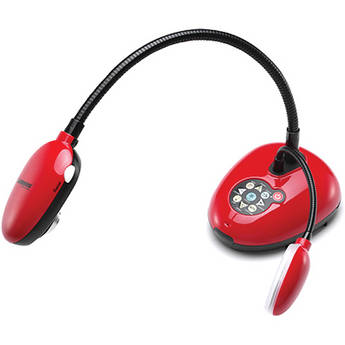Resources: Technology Hardware
Hardware:
Something to write on: Tablets, PCs, monitors, etc...
When using a tablet PC, the tablet needs to serve three purposes simultaneously:
- Run whatever application you want to demonstrate. If you want to demonstrate a specific software, for example (Matlab, engineering design software, etc.) the PC or Tablet needs to be powerful enough to run that software, or to allow you to link to virtual machines running that software. If you can't see it on the screen, you can't demonstrate it in a video lecture.
- Run whatever application you want to 'write' on. I like to write on power point, because the shape of a slide fits the shape of a computer viewing screen so nicely. And, it is a lot like a chalk/whiteboard, so it still 'feels' to me like writing on the board. I suppose in few years, that won't matter at all...Other options are Word, OneNote, Paint, Photoshop and drawing applications, etc.
- Run the screen capture software. This might not seem like too much, but many of today's tablets are not up to the task of running both PowerPoint and Ink2Go, for instance. Tablets with the Android operating system are not able to run many of the engineering software packages that I want to demonstrate. You can, in many cases, get around this, by using your 'regular' computer for your engineering applications, and doing simple demonstrations there (often require minimal writing, so I can do that with just my mouse without needing the stylus/tablet option), and then having a separate computer just for the extensive 'math-ish' writing applications.
Something to write with: Stylus options
Tablet PCs and true tablets already come with a stylus. You want a stylus that writes with a thin line so you can write similar to writing on paper.
Tablet /Tablet PC options include: (Dr. Furse currently uses an old HP Thinkpad tablet PC)
Microsoft Surface Pro 3
Links to an external site.
Fast processor and a nice-sized stylus. You will need to recharge the battery often if multiple programs are running simultaneously.

Very lightweight and compact. Doesn't run as fast as the Surface Pro, but does't carry the same price tag either.

Lenovo ThinkPad Yoga Links to an external site.
This laptop is fast and performs great using screen annotations. The stylus is a bit small, about half the size of normal pen or pencil.

Wacom Products
This 13" monitor sets up easily with Macs or PCs. It connects using an hdmi cable and is very light weight.

Cintiq Companion Tablet
Links to an external site.
The Cintiq Companion runs Windows 8, is lightweight, and has a great stylus. It is a bit pricey as most Wacom products are.

Air Display
iPad using Air Display - $20 (Your iPad becomes a second monitor)

The iPad and other 'capacitive touchscreen' tablets are limited in this fashion, so buy an external stylus with the thinnest possible writing tip. Here are some stylus options from the Doceri (a screen recording app for iPad) product website:
- The Pogo Sketch Links to an external site. is very popular, but uses a thin, flexible tip that can be delicate – which is why replacement tips are available.
- TruGlide Links to an external site.feels more like a pen and uses a conductive fiber tip that glides smoothly over the glass.
Intuos Links to an external site.
Another stylus option comes from Wacom. It connects to your Computer/Device by USB. It is considerably cheaper (about $79) than purchasing a tablet computer. It does require some practice. You draw while looking at your screen rather than where your pen is touching.

Livescribe Smartpen Links to an external site.

The Livescribe pen captures what you write and say, and pairs it with your iOS 7 or greater device using an app. Previous versions of the pen had built-in microphones, but the newest version leverages the microphones that are built-in to the iPad or iPhone. If you find that your audio quality needs adjusting you can always purchase microphones that connect to your iOS device. To create a video you will need to screen record your pencast (the file livescribe creates combining your notes and audio) using Camtasia or any other screen recording software.
Document Cameras
HoverCam Neo3 Links to an external site.

The Neo 3 has a VGA output to use the document camera without a computer. Two Cameras for Picture-In-Picture, and easier on the budget than the Ladibug DC 192.
Ladibug DC 192 HD Document Camera Links to an external site.

The Ladibug has an HD camera with an excellent zoom. It has two lights, built in microphone and you can record directly to a portable USB drive.
External microphone/headset:
You need an external microphone in order to reduce background noise from your recordings. When you write on the screen with a stylus, the computer's internal microphone picks up a lot of scratchy clicking, like chalk on a board. Although this is cute at first, it gets old fast. An external microphone removes that noise. Choose any microphone/headset option that you might normally use for video/audio conferencing such as Skype. These options change so quickly. Just 'google' 'skype headset' or visit your university bookstore or local computer store to see current options. I prefer true headsets where the microphone comes right around to my mouth so that external noises are strongly attenuated. Avoid the lavalier clips that clip onto your collar or clothing, as these tend to record a lot of 'clothing noise'. And I don't really like the ones that sit on the table, as I am constantly turning my head away from them to look at my notes, so my voice gets louder and softer, and the students have to keep turning the volume up and down.
Here are a few top rated USB Headsets on Amazon:
Logitech USB Headset Links to an external site.
Logitech Wireless USB Headset Links to an external site.